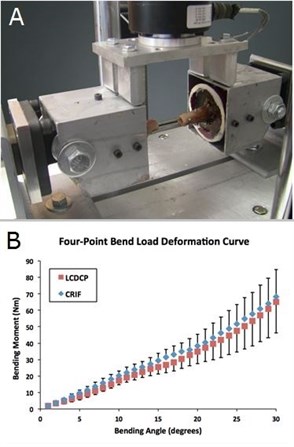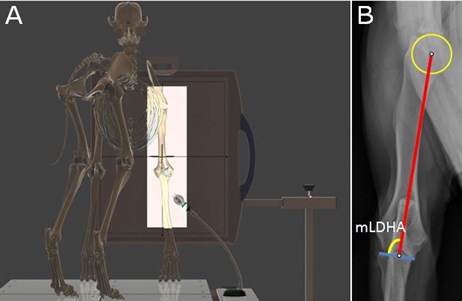Ongoing clinical projects include:
- Development of improved isolation and characterization techniques for canine MSCs
- Use of growth factors or cell-derived matrix proteins to treat non-healing fractures or cartilage loss
- The role of limb alignment in the development and treatment of elbow dysplasia in dogs
- Assessment of ulnar osteotomies (planned cuts to bone) for the treatment of elbow dysplasia in dogs
- Development of a cruciate ligament allograft technique for cruciate ligament loss (similar to the ACL in human beings)
- Assessment of osteoarthritis (OA) modifying drugs or supplements
Biomechanical testing of two fracture fixation systems
Panel A: Photograph of a four-point-bend testing apparatus. Panel B: Load-deformation curve generated from the four-point-bend method shown in panel A. Both constructs exhibit similar stiffness in response to bending loads.

Determining standing limb alignment values in a cohort of healthy Labrador Retrievers
We believe that the overall alignment of the bones and joints of the front limb may play a role in development of elbow dysplasia, a debilitating joint disease common in large and giant breed dogs. Moreover, diagnosis and treatment of abnormal limb alignment may provide additional treatment options for this disease. Panel A: Illustration of the technique used to determine standing limb alignment in dogs. Panel B: Radiograph (x-ray) illustrating the mechanical axis of the humerus (upper arm), joint reference line of the elbow, and resulting joint reference angle of the elbow (mLDHA). These techniques were used to report twelve normal limb alignment values in a cohort of healthy Labrador Retrievers.

